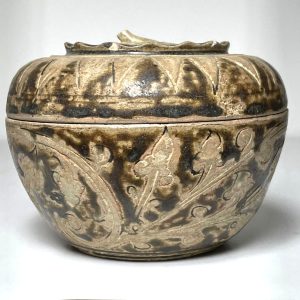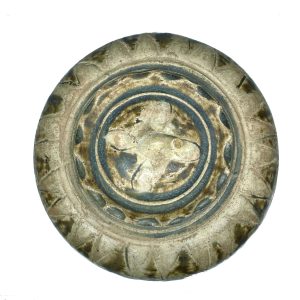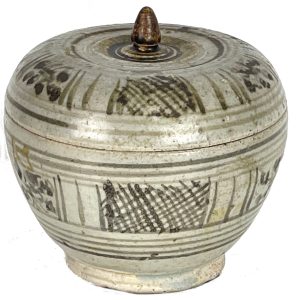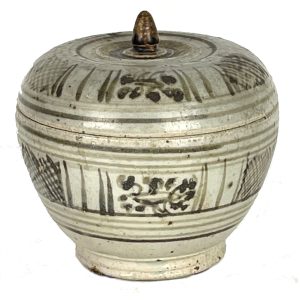-
Sale!


$385.00 Original price was: $385.00.$325.00Current price is: $325.00.
Ht: 3.375” Dia: 4.625” | FREE SHIPPING within continental U.S.
Sawankhalok elegant mangosteen shape stoneware lidded bowl with raised calyx, cream and brown glazes, incised floral and geometric designs to store spices, cosmetics, betel nuts and medicine.
-


$295.00
Ht: 4.25” Dia: 4.625” | SOLD
Produced in Thai kilns in the 14th to 15th centuries, Sawankhalok glazed stoneware lidded bowls were distributed through southeast Asia along with a variety of larger and smaller items. Lidded bowls like this were used to store many things, especially spices, powders and cosmetics, betel nut chewing materials, and medicine. This bowl rests on a thick foot, has a lid with a brown lotus bud handle and covered with decorative panels of underglaze brown crosshatch and vegetal scrolls.
End of content
End of content




